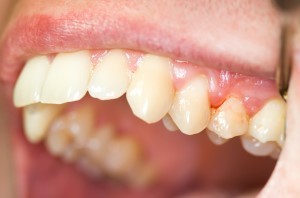Periodontal Treatment


Gingivitis, which is the mildest form of gum disease and is marked by red, swollen or bleeding gums, can typically be treated with a thorough professional cleaning. Some patients may need to take medications as well, and these medications may be administered in the dentist’s office or the patient may take them at home.
When patients fail to address gingivitis, the condition will become more severe. Pockets may form between the gums and the teeth, and the teeth can become loose. In the most advanced cases, tooth and bone loss can occur as a result of gum disease. More invasive periodontal treatment is required for these advanced stages of the condition.
For example, the dentist may need to use special instruments or lasers to remove plaque and bacteria that have accumulated under the gum tissue. This procedure requires at least a local anesthetic, and some patients may opt for sedation as well for additional comfort.
A patient with more advanced gum disease may need to undergo surgery to augment gum tissue that has receded or re-contour bone that has been compromised by the bacteria. However, if you act before your gum disease reaches this point, your dentist may be able to help you avoid surgery.
After you’ve had one episode of gum disease, you are at risk for a relapse, so be sure to take good care of your smile at home by brushing and flossing and follow up with professional dental care and exams at least every six months for ongoing monitoring of your gum tissue.
When gum disease is identified early, many patients are able to avoid surgical treatments for the condition. If you spot any symptoms, like redness or bleeding in your gums or pockets between the gums and the teeth, consult with our experienced team of dental professionals to learn what treatment options may be available to you.